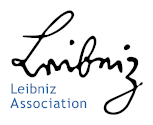- The Institute
- Research
- Dictatorships in the 20th Century
- Democracies and their Historical Self-Perceptions
- Transformations in Most Recent History
- International and Transnational Relations
- Edited Source Collections
- Dissertation Projects
- Completed Projects
- Dokumentation Obersalzberg
- Center for Holocaust Studies
- Berlin Center for Cold War Studies
- Publications
- Vierteljahrshefte
- The Archives
- Library
- Center for Holocaust Studies
- News
- Dates
- Press
- Recent Publications
- News from the Institute
- Topics
- Munich 1972
- Confronting Decline
- Feminist, Pacifist, Provocateur
- Der Mauerbau als Audiowalk
- Digital Contemporary History
- Transportation in Germany
- Envisaged Futures at the End of the Cold War
- From the Reichsbank to the Bundesbank
- German Federal Chancellery
- History of Sustainabilities: Discourses and Practices since the 1970s
- Changing Work
- Democratic Culture and the Nazi Past
- The History of the Treuhandanstalt
- Foreign Policy Documentation (AAPD)
- Dokumentation Obersalzberg
- Hitler, Mein Kampf. A Critical Edition
- "Man hört, man spricht"
- Dictatorships in the 20th Century
- Democracies and their Historical Self-Perceptions
- Transformations in Most Recent History
- International and Transnational Relations
- Edited Source Collections
- Dissertation Projects
- Completed Projects
- Dokumentation Obersalzberg
- Center for Holocaust Studies
- Berlin Center for Cold War Studies
Hearing and Speaking in War: Practices of Informal Communication in the National Socialist Majority Society, 1939–1945
Projektinhalt:
How did “ordinary Germans” communicate under the specific conditions of war and Nazi dictatorship? How did people gather information beyond the official news and restricted information supply of the regime, but also in a reciprocal interplay with the Third Reich’s information policy or the Allied radio propaganda? Which spaces did play a viral role for everyday communication, which spatial factors did affect the interactions “from below”? Which actors were able to establish mechanisms of knowledge acquisition and, therefore, their own subjective interpretations? What kind of social consequences did constructed realties provoke? And how did the regime itself react, but also began to make use of the informal dynamics?
Although a history of informal communication under National Socialism offers a multilayered perspective on questions about communication and the social and cultural history of the Third Reich and German wartime society, detailed studies remain a historiographical lacuna. The historic research about informal communication rarely went beyond an undifferentiated analysis of, e.g., a “rumor spreading like wildfire through the Reich.” But rumors did not simply “spread,” they were not merely “handled” to the next one, knowledge had a broader social function than “circulating.” Informal communication reveals multilayered social dynamics, it was dependent on space and time, functioning differently among different social groups. Therefore, the study shifts questions towards how knowledge was acquired and asks for concrete practices and actors as well as spaces: It focusses on modes of gathering, constructing, and communicating information “from below.”
An analysis of events and developments in the light of war can demonstrate the social functions and consequences of the hearing and speaking of the majority society, which saw an increased desire for information in times of crisis and uncertainty. Informal communication could structure and hierarchize the local society. Moving away from logics of inclusion and exclusion in relation to the national community as “Volksgemeinschaft” and an analysis of places of propaganda and violence, new actors and spaces do appear: Lorry drivers transported rumors throughout their breaks and the Reich’s Autobahn system; children, who brought the milk in the early morning, were the first to communicate a new information; housewives did constantly exchange news while waiting in front of grocery stores and shops. These people were, by all means, actors of communication, delivering a subjective reality, engaged with their social environment with an own agenda – and provoking consequences in the concrete local space. Here, their practices did constitute the society and establish hierarchies of information. Informal communication, however, did oppose the Nazi claim on the public and their monopoly of information. Therefore, the study will also highlight the regime’s fight agains “rumormongering” of its “national comrades” as well as their acquisition and adaption of informal communication, for example in propaganda word-of-mouth campaigns.
The sources of this project include the reflection of informal communication in formal communication, such as the regime’s police and Sicherheitsdienst reports or court cases, party documents or propaganda sources on the one hand. On the other hand, the private sphere generates a more direct insight into the everyday practices of hearing and speaking, mainly through ego documents and personal correspondence (diaries, letters). The study of local press will be equally important for references to informal communication. Furthermore, Allied flyers or radio propaganda are of relevance.





